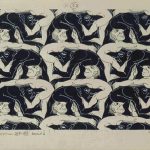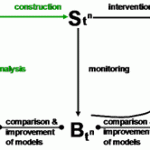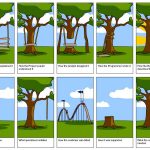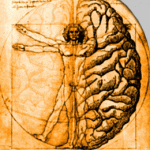Last month, at the Architectural Association, Bill Hillier described how English Heritage often want to reinstate the paths and roads of the historic sites they are trying to preserve. Hillier argued that these sites need new pathways as the way people interact with them now is not the same as when they were built. One example of this is Rievaulx Abbey. It was once a place where monks lived and worshipped, until Henry VIII dissolved the monastries to get his hands on their money.
Today, Rievaulx is a tourist attraction, which is occasionally used as a place of worship and the change in its functionality is reflected in the pathways around it. They can be described as paths of desire, which have come about because visitors wander across the grass or clamber over a wall to get to a specific part of the abbey instead of walking about retracing the routes the Cistercians may have used, which would give visitors a better insight into the way the abbey and its inhabitants behaved.
Function-behaviour-structure
Man is constantly transforming the world around him. Either by emergent patterns, through the process of design, or as in the case of Rievaulx, through destruction. Designers have been described as society’s change agents. They take a set of requirements, or functions, and transform them into a structural description, by considering the types of behaviour an artefact should have.
Exploring design solution spaces, and design as an activity in itself, in terms of function, behaviour, and structure is an approach which is popular in the artificial intelligence community and uses the following definitions:
- Function: what an artefact is for
- Behaviour: what an artefact does
- Structure: what an artefact is made of
Function is transformed into structure via behaviour. Usually, the transformation of function to structure cannot be done without first considering the behaviour of such a structure. We need to know what an artefact does and how it will behave before we can select the materials (or structure) which will embody this behaviour and perform correctly.
No-function-in-structure
Once an artefact exists, it can be impossible to tell what its function is from the structure (known as the no-function-in-structure principle). This is because artefacts are often employed outside the context in which they were originally designed. The post-it note originated because one 3M employee thought that the small pieces of paper for testing glue were actually a new type of bookmark. The interpretation of structure without background knowledge of original functionality can lead to new functionality. In other words, people will use the product you design in a completely different way to the one you anticipated, if you don’t tell them the purpose for which the product was originally designed.
Humans as a factor in the design process
As a designer, it is interesting to see people find new uses for old things, but usually only from a research point of view. Due to the increasing complexity of the systems in our daily lives, successful designs communicate their purpose through the artefact itself. Architect Frank Lloyd Wright was adept at communicating his ideal view of how a house should be used by its occupants. Once a house of his was built, he would often nail down the furniture so that the inhabitants couldn’t mess with his vision. Excessive perhaps, but his message was clear.
One way of ensuring effective communication is by iteratively repeating the cycle of defining function, then behaviour and structure. It is an approach which has been applied to knowledge-based systems, structural monitoring, and software engineering.







Have you ever read the Design Prototypes: “A Knowledge Representation Schema for Design”, Gero, J. S.
Hi Mark, read it and extended it to cover the whole of an artefact’s lifecycle in a section of my PhD work back in 2000. All the best. Ruth